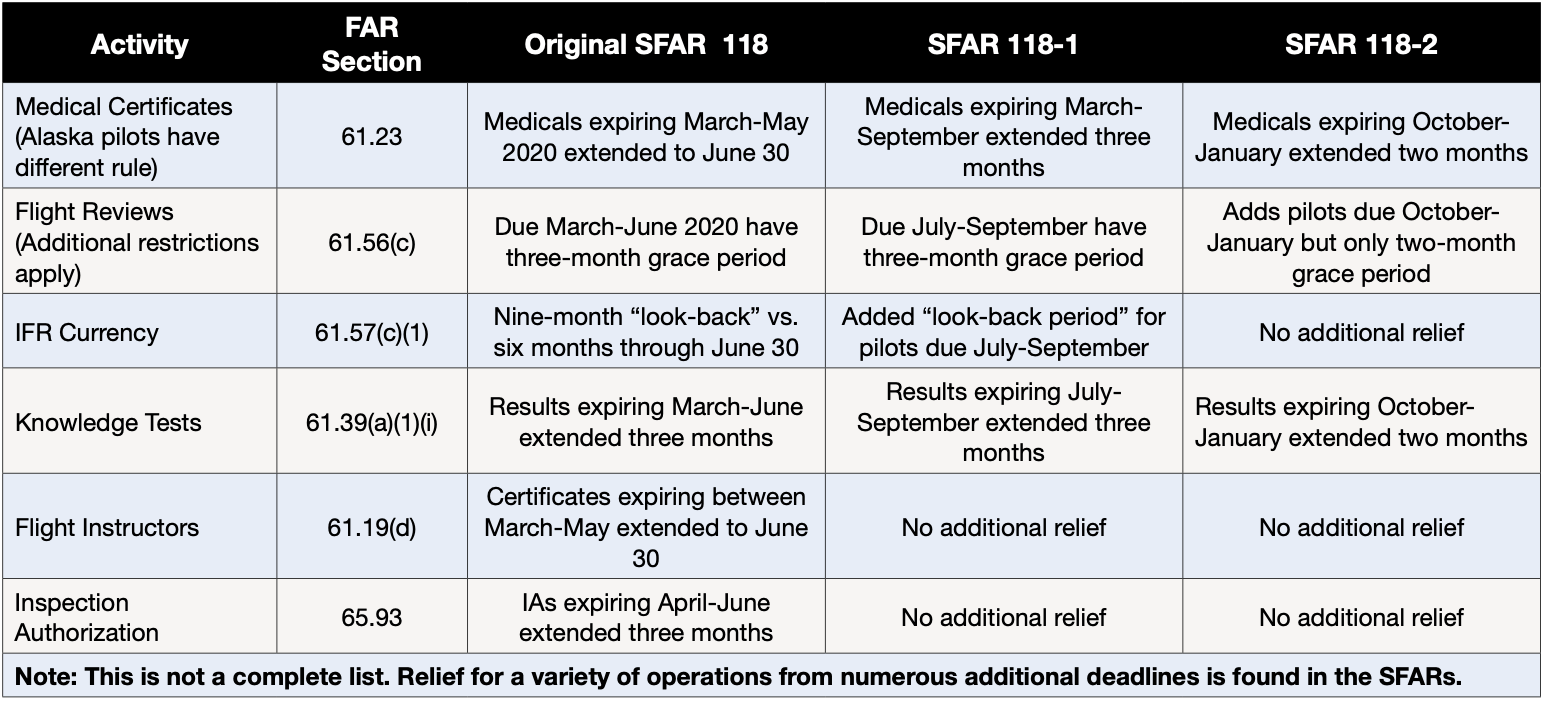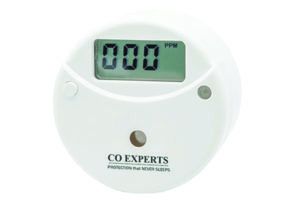As the Covid-19 pandemic’s effects on aviation stretched into the final calendar quarter of 2020, the FAA on October 1 released a final rule extending deadlines for “persons who have been unable to meet certain requirements during the national emergency” surrounding the disease. The updated special federal aviation regulation (SFAR 118-2) was scheduled to be published October 6, 2020, after this issue’s deadline, and “allows operators to continue to use pilots and other crewmembers in support of essential operations” while providing “regulatory relief to additional persons unable to meet duration and renewal requirements due to the public health emergency,” the FAA said. The provisions of SFAR 118-2 are effective through April 30, 2021.

“Despite the gradual resumption of training, checking, and testing activities, the demand for completing these activities remains high because the industry has not yet been able to catch up from the backlog created during the initial closures and shutdowns,” the FAA said in the newest SFAR.
The table below, which updates a similar list published in our June 2020 issue, details some of the agency’s regulatory requirements in SFAR 118-2 and their new deadlines. It is not all-inclusive; parties concerned with other deadlines should review the new SFAR with their own situation in mind.

In addition to the new Safety Alert detailed in the sidebar below, the NTSB also is marking the onset of colder weather in the U.S. by warning pilots of the increased risks of carbon monoxide (CO) poisoning. The safety board also reminded pilots of its existing guidance in Safety Alert SA-069, from September 2017, and used a detailed blog post by Medical Officer Michelle Watters, MD, PhD, MPH, to stress that prevention and detection are the best ways to guard against CO in the cockpit:
Prevention
Ensure your mechanic thoroughly inspects the exhaust systems, air ducting, firewalls, and door and window seals.
During preflight inspections, look for cracking at the ends of your muffler and evidence of soot, which might indicate cracking in the muffler.
Follow the manufacturer’s recommendations for the lifetime limit on your muffler and schedule for replacement parts.
Detection
Detectors that only change color when carbon monoxide reaches a certain level are undesirable.
Detectors featuring audible alerts or flashing notifications provide the best warning.
Electrochemical sensors are most suitable due to their higher accuracy and quicker response time.
“Because the industry is seeing improvements in the availability of facilities for training, testing, and examinations and the number of persons available to conduct those activities is increasing, the extent of the relief in this final rule is reduced in many areas,” the FAA stated. The SFAR adds, “The FAA expects that, with continued improvement over the next several months, no further relief will be necessary.”
With that in mind, the AOPA pointed out that, “The SFAR amendment eliminates the expanded instrument currency ‘lookback’ period previously allowed for pilots who met certain operational requirements, and no new relief was provided for flight instructors with certificates nearing expiration.”
“Although we sought continued relief for instrument currency and flight instructor certificates, we appreciate the FAA’s continued extensions of validity for medical certificates and knowledge tests,” Christopher Cooper, AOPA senior director of regulatory affairs, said on the association’s web site. “The FAA’s recognition of the importance of general aviation during COVID-19 restrictions and the increased infection rates across the country has allowed aircraft owners and operators the flexibility to continue to fly safely,” he added.
The new SFAR results in part from a September 3, 2020, letter jointly signed by seven general aviation organizations to the FAA’s Associate Administrator for Aviation Safety, Ali Bahrami, seeking the extensions.
A new Safety Alert from the NTSB (SA-082, “Flight in Snow”) urges pilots to “assess the risk of flight in wet snow conditions, especially at low altitudes.” The Safety Alert notes that FAA guidance (Advisory Circular AC 91-74B, “Pilot Guide: Flight in Icing Conditions”) “states ‘dry snow’ is unlikely to pose an icing hazard while ‘wet snow’ could, but does not define either term.” With that in mind, the NTSB recommends that pilots:
Understand that wet snow has the potential to freeze onto aircraft surfaces, and that preflight actions should include using the appropriate icing overlays when viewing graphical forecasts.
While airborne, stay updated with the latest Sigmets/Airmets, center weather advisories and pilot reports, plus ask for and provide related information to ATC.
Review manufacturer and other guidance regarding use of pneumatic deicing boots or other equipment.
Noting that local and regional restrictions are beginning to ease, “We are pleased and heartened to see that the hard work by federal, state, and local governments and diverse groups of essential workers have resulted in a slowing and reduction of COVID-19 cases,” the letter stated. “As a result, individual states have begun lifting stay-at-home/shelter-in-place restrictions and businesses are beginning to reopen.”
“While the remaining patchwork of restrictions requires flexibility, less accommodation is necessary than when the pandemic first spread across America. Therefore, we request two months of relief, rather than the three months provided by SFAR 118 and SFAR 118-1, for operators and pilots facing expiring privileges and certificates through December 31, 2020…” the organizations wrote.




